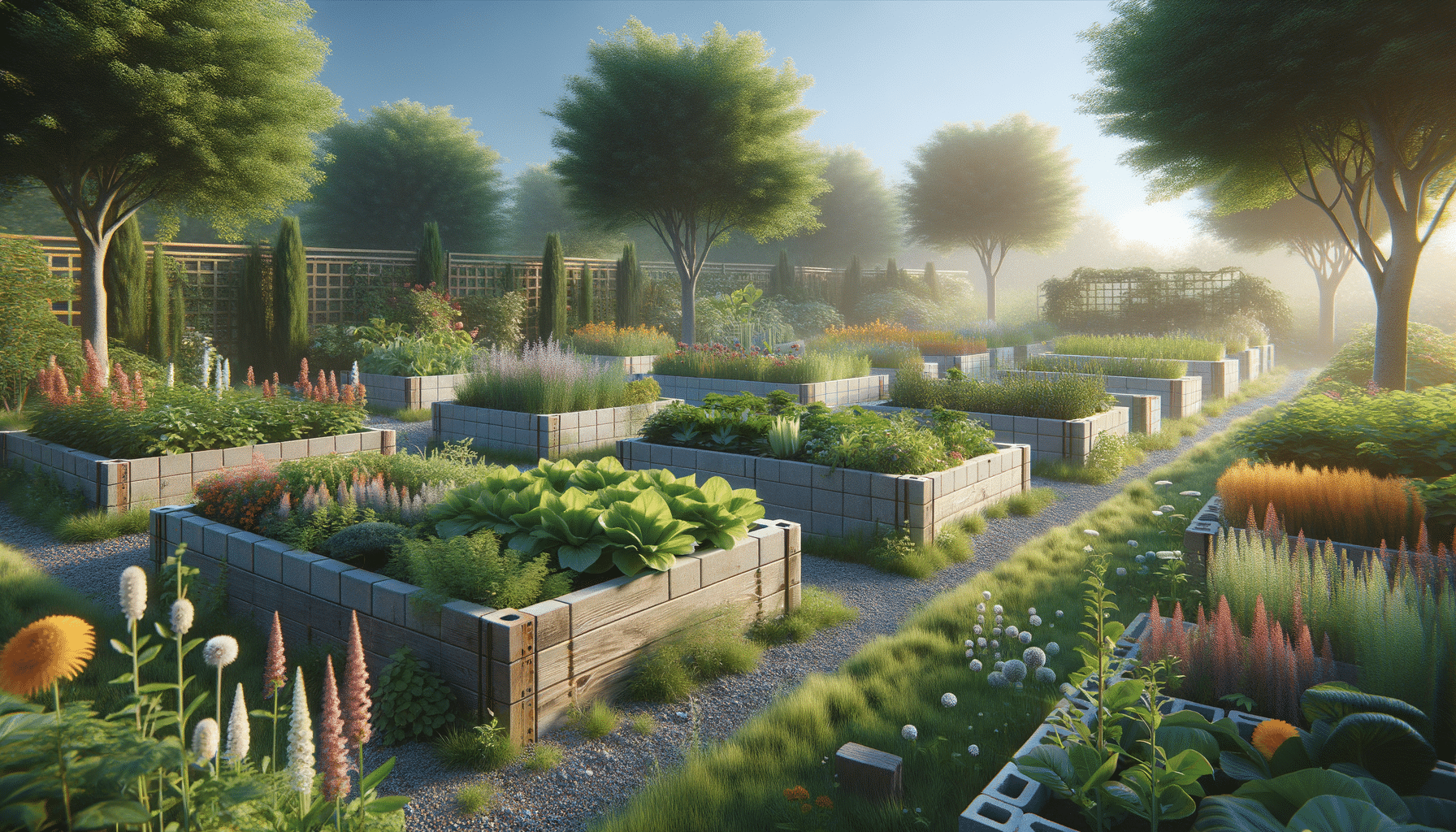
Beautiful, Sturdy & Affordable: Create Your Own Raised Bed Garden
Introduction to Raised Garden Beds
Raised garden beds have become a staple in modern gardening, offering numerous benefits that cater to both novice and experienced gardeners. These elevated plots of soil provide an organized and efficient space for cultivating a variety of plants. The appeal of raised garden beds lies in their ability to enhance plant growth, improve drainage, and minimize weed growth. Whether you’re planning to grow vegetables, herbs, or flowers, raised beds can be tailored to meet your gardening needs.
One of the primary advantages of raised garden beds is their accessibility. Gardeners with limited mobility find them easier to work with, as they reduce the need for bending and kneeling. Additionally, raised beds allow for better soil control. Gardeners can create the ideal soil mix, free from contaminants and pests commonly found in traditional garden plots. This control over soil composition leads to healthier plants and increased yields.
Moreover, raised garden beds can be a stylish addition to any outdoor space. With a variety of materials and designs available, they can complement any garden aesthetic. From rustic wooden frames to sleek metal constructions, there’s a raised bed to suit every taste. In the following sections, we will explore how to create budget-friendly raised garden beds, focusing on materials, design, soil preparation, and maintenance.
Choosing the Right Materials
When it comes to building raised garden beds, selecting the right materials is crucial for both durability and aesthetics. The most common materials include wood, metal, and composite. Each material has its own set of advantages and considerations.
Wooden raised beds are a popular choice due to their natural look and ease of construction. Cedar and redwood are among the top options for wooden beds because they are naturally resistant to rot and insects. However, these can be more expensive than other types of wood. For those on a budget, treated pine is a cost-effective alternative, though it’s essential to ensure that any treatments used are safe for food-growing environments.
Metal raised beds, often made from galvanized steel, offer a modern and industrial look. They are exceptionally durable and can withstand harsh weather conditions. However, they may heat up more quickly in direct sunlight, which can affect the soil temperature. It’s important to consider the climate of your area when opting for metal beds.
Composite materials, made from a blend of wood fibers and plastic, are another option. These beds are low-maintenance and resistant to rot and pests. They also come in a variety of colors and styles, allowing for customization to match your garden’s aesthetic. While they can be more expensive upfront, their longevity often makes them a worthwhile investment.
Ultimately, the choice of material will depend on your budget, aesthetic preferences, and the specific needs of your garden. Consider the pros and cons of each material to make an informed decision that aligns with your gardening goals.
Designing Your Raised Bed Garden
The design of your raised bed garden is a crucial factor that can influence both its functionality and visual appeal. When planning the layout, consider the size and shape of your beds, as well as their placement in your garden space.
Size is an essential consideration. Raised beds should be wide enough to allow you to reach the center from either side, typically no more than four feet across. This width ensures that you can easily tend to your plants without stepping on the soil, which can lead to compaction. The length of the bed can vary based on available space and personal preference, but common lengths range from four to eight feet.
The height of the raised bed is another important aspect. A height of 12 to 18 inches is generally sufficient for most vegetables and flowers. However, if you plan to grow root vegetables like carrots or potatoes, consider building deeper beds to accommodate their growth. Taller beds also reduce the need for bending, making them more accessible for those with physical limitations.
When it comes to placement, ensure your raised beds receive adequate sunlight, ideally six to eight hours of direct sunlight per day. Consider the proximity to a water source for convenient irrigation. Additionally, think about the overall flow of your garden space and how the raised beds will fit into the existing landscape.
Incorporating pathways between beds can enhance accessibility and aesthetics. Paths can be made from various materials such as gravel, wood chips, or stepping stones, depending on your garden’s style and budget. Thoughtful design will ensure that your raised bed garden is both functional and visually pleasing.
Preparing the Soil for Planting
Soil preparation is a critical step in ensuring the success of your raised bed garden. The quality of the soil directly impacts plant health and productivity, making it essential to invest time and effort into creating the right soil mix.
A common recommendation for raised beds is to use a mix of one-third topsoil, one-third compost, and one-third soilless growing medium, such as peat moss or coconut coir. This combination provides a balanced environment with adequate nutrients, drainage, and aeration. Compost is particularly valuable as it enriches the soil with organic matter, improving its structure and fertility.
Before filling your raised bed, ensure that the bottom is lined with a layer of cardboard or landscape fabric. This barrier helps to suppress weeds and prevents the soil from mingling with the native ground soil. Once the beds are filled, it’s important to level the soil and water it thoroughly to settle it before planting.
Testing the soil’s pH is also advisable. Most plants thrive in a slightly acidic to neutral pH range of 6.0 to 7.0. If the pH is not within this range, amendments such as lime or sulfur can be added to adjust it accordingly.
Regularly replenishing the soil with fresh compost and organic matter is key to maintaining its fertility over time. Mulching the surface with straw, wood chips, or leaves can help retain moisture, suppress weeds, and add organic matter as it breaks down. With the right soil preparation, your raised bed garden will provide a thriving environment for healthy plant growth.
Maintaining Your Raised Bed Garden
Proper maintenance is essential to keep your raised bed garden thriving throughout the growing season. Regular care not only ensures healthy plants but also prolongs the life of your raised beds.
Watering is a critical aspect of garden maintenance. Raised beds tend to drain more quickly than traditional gardens, so consistent watering is necessary, especially during dry spells. Drip irrigation systems or soaker hoses are efficient options for delivering water directly to the roots, minimizing evaporation and ensuring even moisture distribution.
Weed control is another important task. While raised beds help reduce weed growth, some weeds may still find their way in. Regularly inspect your beds and remove any weeds promptly to prevent them from competing with your plants for nutrients and water.
Fertilization is key to maintaining soil fertility. Organic fertilizers, such as compost tea or fish emulsion, can provide essential nutrients without harming the environment. Applying these fertilizers every few weeks will support robust plant growth and yield.
Inspecting plants for pests and diseases should be a routine practice. Early detection and intervention can prevent significant damage. Encourage beneficial insects, like ladybugs and bees, which can help control pest populations naturally.
At the end of the growing season, clear out any plant debris and add a layer of compost to the soil. This practice replenishes nutrients and prepares the bed for the next planting cycle. With regular maintenance, your raised bed garden will continue to be a productive and beautiful addition to your outdoor space.


